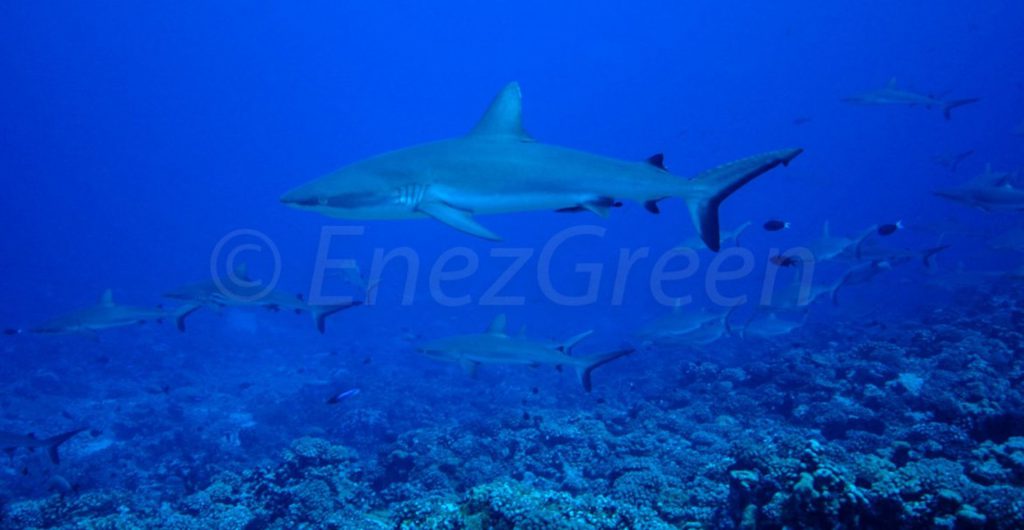With 900 individuals present in the pass Tetamanu, Fakarava is home to one of highest densities of reef sharks in the world
“In these remote islands from human activities trophic pyramid is inverted, a paradox in which predators are more abundant than their prey, “explains Johann Mourier, who conducted the study as part of his post-PhD at the CRIOBE (Centre de Recherche Insulaire et Observatoire de l’Environnement, USR 3278 EPHE-CNRS-UPVD) in collaboration with the team of the team of marine scientists and divers of Andromède Oceanology.
According to the researcher, Fakarava stands out from all other studied spots by the exceptional biomass of sharks that is 2 to 3 times higher. “We have estimated that the population of gray sharks would need about 90 tons of fish per year in order to meet its energy needs.”
Yet the amount of fish present in Fakarava is well below the estimated quantities required. After having equipped more than a dozen gray reef sharks with acoustic transmitters, the team discovered that gray reef sharks in the channel, which is just 100m wide and 30m deep, fluctuated in number from about 250 in the summer to 700 in the winter.
That winter peak coincided with the spawning of the groupers, which brought together some 17,000 of the smaller fish at a time, from habitats up to 50km away.
Spawning aggregations can gather to 17,000 groupers from various reefs directly delivering food to the gray sharks
Every year from June to July, groupers come systematically breed in the channel Tetamanu. spawning aggregations concentrate thousands of fish from various reefs directly delivering food to the gray sharks. This explains how high densities of sharks may persist in a wild state despite their significant energy needs.
This research demonstrates that fish spawning aggregations can play an important role in maintaining high densities of predators in reefs low impacted by humans. However, Johann warns: “shark fishing bans are probably not sufficient to ensure shark populations’ conservation if they are not implemented jointly with the conservation plan of fish spawning aggregations. If you overexploit these aggregations, sharks have no choice but to leave their reef to find food.”




